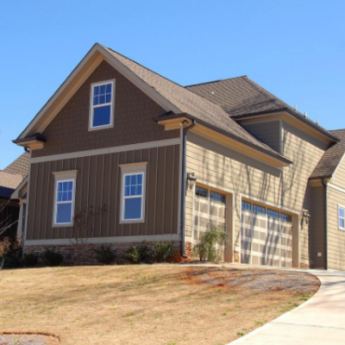The Ultimate Guide To Types Of Subfloor: Choosing The Right Foundation For Your Flooring

Are you embarking on a flooring project? Choosing the right type of subfloor is key to its success.
In this guide, we will discuss the various types of subfloor—plywood, OSB, concrete—and provide a comparative look at these foundational elements, offering insights that aim to align with your flooring choice and installation needs. We’ll untangle the complexities, paving the way for a solid and enduring surface underfoot.
Exploring The Layers Beneath Your Feet: Understanding Subfloor Basics
Just beneath your feet, beneath the visible layer of flooring, lies a hidden layer of strength and stability. It’s the subfloor, the silent guardian of your floor joists, providing support and insulation. But what is a subfloor, and why is it so important? Think of your subfloor as the backbone of your flooring system.
It’s a structural layer, providing a level foundation for your finished flooring material, preventing unevenness and squeaking, and protecting against structural damage.
But how do you choose the right subfloor material? An array of subfloor materials awaits your selection, from traditional plywood sheets to modern engineered wood alternatives. Each comes with its benefits, drawbacks, and ideal use scenarios.
Your subfloor should be resilient, especially if you’re planning to install hardwood floors or other flooring types. When addressing subfloor considerations, it’s recommended to seek professional guidance to guarantee the correct choice, installation, and alignment with the layers of the flooring system.
The Core Subfloor Materials: A Comparative Analysis
Choosing the appropriate subfloor materials could be challenging, but there’s no need to worry. The vast array of options can be narrowed down to three core materials: plywood, OSB (oriented strand board), and concrete. Each of these materials offers unique benefits and has its own set of considerations.
We will further analyze each one.
Plywood Subfloors: The Traditional Choice
Plywood subfloors represent the dependable and proven choice among subfloor materials. They offer robustness, longevity, and compatibility with a variety of flooring materials.
Plywood can be conveniently customized in terms of shapes and dimensions, providing effective insulation against moisture and temperature fluctuations. However, it’s important to note that plywood can be susceptible to separation under extreme heat, making it less suitable for warmer regions and potentially affecting the finished floor.
The installation of plywood subfloors is a careful dance. All joints must be properly glued using construction adhesive and secured with screws or nails to the joists to prevent movement or shifting. A moisture barrier is needed to protect the subfloor from moisture damage, which helps to prolong the lifespan of your flooring.
In areas experiencing heavy foot traffic, thicker subflooring, such as 3/4” tongue-and-groove plywood, is recommended. This type of subflooring produces a stiffer floor and its interlocking edges aid in preventing movement of the subfloor pieces.
Osb Subfloors: Engineered For Efficiency
Another option is the OSB subfloor, which serves as an engineered replacement for plywood. Oriented Strand Board or OSB is a form of engineered wood made up of numerous 3- to 4-inch wood strands arranged in a criss-cross pattern.
These strands are glued and pressed together to create a dense and water-resistant board. The installation process is similar to that of plywood subflooring, and it does not necessitate any special tools.
OSB subfloors offer strength and stability, as well as superior water resistance in comparison to plywood. Their cost-effectiveness further enhances their appeal as a subflooring choice.
Proper installation of OSB subfloors ensures a flat and smooth surface for the finished flooring. However, when installing engineered, solid, or floating floors less than 1/2-inch thick over an OSB subfloor, it’s advisable to incorporate a 3/8-inch or 1/2-inch thick plywood underlayment to enhance support and stability.
Concrete Subfloors: Stability And Strength
Lastly, we have concrete subfloors, known for their immense strength among subfloor materials. Concrete subfloors offer numerous benefits, such as:
- Superior durability
- Excellent soundproofing properties
- Fire resistance
- Protection against water damage, pests, and mold
Concrete subfloors are a robust foundation typically 4-6 inches thick with a strength rating of 3,500-5,500 psi.
The installation of a concrete subfloor involves preparing the surface by smoothing and leveling the concrete slab, testing the slabs for moisture, installing a moisture barrier, and then installing the desired flooring material.
Concrete subfloors can accommodate a range of flooring types, such as floated floors and glue-down flooring. However, they may entail higher costs compared to plywood, present challenges in terms of handling, and necessitate the use of moisture barriers and meticulous installation to avoid potential issues such as moisture-related damage.
Specialty Subfloor Options: Beyond The Basics
Having covered the basics, we will now examine some specialty subfloor options. Engineered wood subfloors and radiant-ready subfloors offer unique benefits and cater to specific needs. Whether you’re looking for high-performance foundations or warmth from the ground up, these specialty options have got you covered.
Engineered Wood Subfloors: High-Performance Foundations
Engineered wood subfloors, often featuring a wood veneer top layer, are comparable to high-performance sports cars in the realm of subfloor materials. They offer enhanced durability and moisture resistance compared to traditional plywood, OSB options, and wood plank subfloors.
This is attributed to their composite core layers and layered structure, which exceed the moisture resistance of both plywood and OSB, making them highly durable and resistant to moisture.
The specific construction of engineered wood subfloors leads to:
- Heightened moisture resistance
- Durability
- Reduced sensitivity to fluctuations in temperature and moisture
- Prevention of moisture-related problems
Engineered hardwood flooring is typically more economical, with prices ranging from $4.50 to over $16 per square foot, including labor. Therefore, engineered flooring is approximately $1 to $2 less expensive per square foot compared to solid wood flooring.
Radiant-Ready Subfloors: Warmth From The Ground Up
Radiant-ready subfloors are designed specifically to accommodate in-floor heating systems. An example of this is the Warmboard R, which is a retrofit subfloor that accommodates PEX tubing for radiant heating. It is designed to be installed over existing subfloor structures and usually has a thickness of 13/16 inches. These subfloors offer numerous advantages, such as:
- Enhanced safety with the use of engineered wood
- Decreased operational expenses
- Dependable and uniform room heating
- Prevention of moisture accumulation
- Improved energy efficiency
- Comfort of consistent and even heat distribution
Radiant-ready subfloors function by incorporating a layer of concrete or gypcrete on top of the subfloor to embed the tubing for the radiant heating system. Alternatively, electric radiant floor heating systems utilize heat-conducting plastic mats or electric heating wires to heat the floors.
Their construction materials usually include wood, aluminum, and foam. A radiant heating system installation in radiant-ready subfloors involves disconnecting the toilet and removing baseboard moldings. Subsequently, the radiant system is usually embedded in a flowable underlayment before the finished flooring is installed.
Installation Insights: Ensuring A Successful Subfloor
A well-done subfloor installation is comparable to a perfectly performed dance. It requires precision, attention to detail, and careful coordination. Understanding the best practices for successful subfloor installation is key to ensuring the durability and performance of your flooring system.
One of the first steps in the installation process is to measure moisture levels and incorporate a vapor retarder to reduce moisture transfer and mitigate the effects of seasonal humidity changes.
It’s crucial to thoroughly inspect the subfloor during installation to confirm its stability and the proper driving of fasteners. Any uneven joints should also be filled or sanded to maintain a level surface.
Finally, consulting a professional is recommended as they can offer recommendations on the most suitable materials and installation methods for your specific situation, as well as assist in proactively addressing any potential challenges.
Matching Subfloor To Finished Flooring: A Strategic Approach
The decision on the right subfloor involves not only its properties but also its compatibility with the finished flooring. It’s similar to playing chess where each move is carefully planned to achieve victory.
Different types of finished floors require different subfloor materials. For example:
- Tile is best installed on a concrete subfloor
- Hardwood and laminate are best installed on a plywood subfloor
- Solid hardwood floors are not advised for installation over concrete in basements or below grade, even with moisture barriers, due to the heightened risk of moisture damage.
When installing a new subfloor, it is important to consider factors like the type of flooring and the level of traffic and usage in the space. Additionally, environmental factors such as humidity and moisture levels should be taken into account to ensure a successful installation.
Navigating Subfloor Challenges: Repair And Maintenance
Like any other part of a home, subfloors also face challenges. Repairing and maintaining subfloors can come with its set of difficulties, including:
- Moisture-related issues like warping, buckling, and rotting
- Scratches, gouges, and water damage necessitating spot repairs or refinishing
- Loose boards
- Squeaks
In some cases, replacement of the subfloor might be necessary due to safety risks and compromised structural soundness. Nevertheless, these challenges can be navigated with the right knowledge and approach.
For a water-damaged OSB subfloor, the steps to repair it are as follows:
- Stop the leak to prevent further damage.
- Remove the affected flooring.
- Assess the extent of the damage and check the floor joists for stability.
- Carefully cut out the damaged areas of the OSB subfloor.
- Replace the damaged sections with a new, moisture-resistant OSB subfloor.
On the other hand, ensuring a level and stable concrete subfloor involves professional concrete leveling techniques, such as drilling holes and pumping a self-leveling compound to create an even surface.
Finally, for subfloor squeaks, it’s necessary to locate the squeaky areas and secure any loose areas causing friction by screwing from underneath the subfloor.
The Right Subfloor Can Make All the Difference
In the journey of constructing a home, the subfloor is a critical milestone that sets the tone for the rest of the building.
From understanding the basics of subfloors to the core subfloor materials, specialty options, installation insights, and strategies for choosing the best subfloor based on the finished flooring, our journey has covered a lot of ground.
Remember that the right subfloor can make all the difference to the longevity, durability, and performance of your flooring system.
So, as you embark on your next flooring project, keep these insights in mind and choose wisely!
Read More:

















Leave A Reply